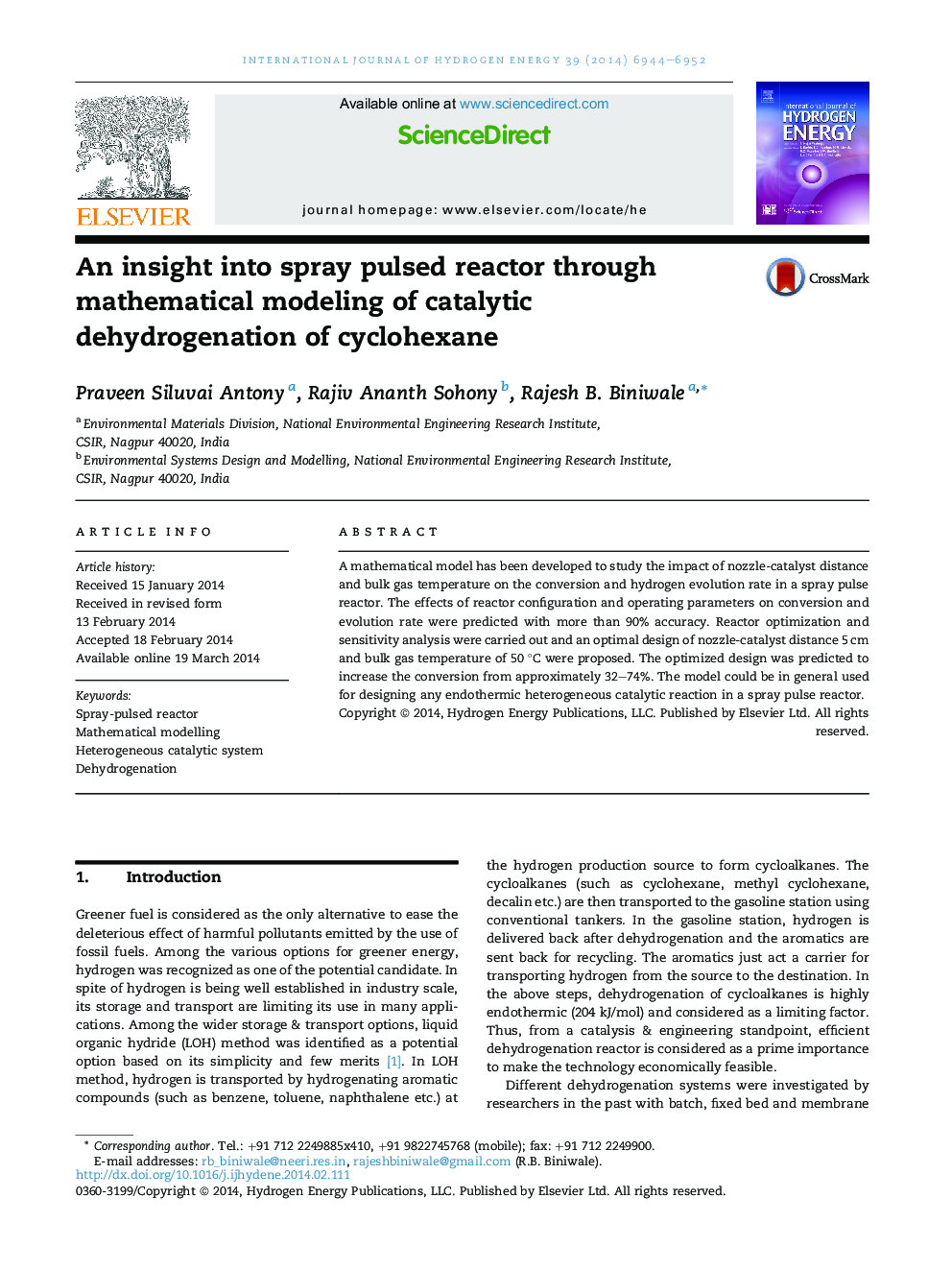| کد مقاله | کد نشریه | سال انتشار | مقاله انگلیسی | نسخه تمام متن |
|---|---|---|---|---|
| 1273449 | 1497496 | 2014 | 9 صفحه PDF | دانلود رایگان |

• Spay pulsed phenomena explained for catalytic dehydrogenation.
• Improved efficiency by more than 2 times through optimization.
• Mathematical model delineated for reactor designing and upscaling.
A mathematical model has been developed to study the impact of nozzle-catalyst distance and bulk gas temperature on the conversion and hydrogen evolution rate in a spray pulse reactor. The effects of reactor configuration and operating parameters on conversion and evolution rate were predicted with more than 90% accuracy. Reactor optimization and sensitivity analysis were carried out and an optimal design of nozzle-catalyst distance 5 cm and bulk gas temperature of 50 °C were proposed. The optimized design was predicted to increase the conversion from approximately 32–74%. The model could be in general used for designing any endothermic heterogeneous catalytic reaction in a spray pulse reactor.
Journal: International Journal of Hydrogen Energy - Volume 39, Issue 13, 24 April 2014, Pages 6944–6952